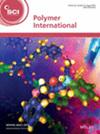Sonny Widiarto, Sutopo Hadi, Sun Theo Constan Lotebulo Ndruru, Edi Pramono, Achmad Rochliadi, I Made Arcana
求助PDF
{"title":"Utilisation of nanocellulose from cassava peels in polymer electrolyte membrane fabrication","authors":"Sonny Widiarto, Sutopo Hadi, Sun Theo Constan Lotebulo Ndruru, Edi Pramono, Achmad Rochliadi, I Made Arcana","doi":"10.1002/pi.6734","DOIUrl":null,"url":null,"abstract":"<p>In recent decades, lithium-ion batteries have become the leading energy storage solution due to their rechargeability, long lifespan, high energy density and lightweight design, although the conventional liquid electrolytes used raise performance and safety concerns, particularly regarding volatility and flammability at high temperatures. This study explores the incorporation of nanocellulose (NC) derived from cassava peels into polymer electrolyte membranes based on poly(ethylene oxide) (PEO). NC serves as a reinforcing agent, enhancing the mechanical properties of the membranes, such as tensile strength, while its natural abundance and biocompatibility offer a sustainable alternative for electrolyte materials. The membranes were prepared via the solution casting method utilising water as the solvent and subsequently characterised using Fourier transform infrared spectroscopy, XRD, a tensile tester, SEM and TGA/differential thermal analysis/DSC. Incorporating NC into the PEO matrix resulted in enhanced tensile strength and reduced strain at break, while negligibly impacting the ionic conductivity of the membrane. The most effective membrane composition was achieved at a PEO to NC ratio of 80:20, with the optimum ionic conductivity of the polymer electrolyte being 1.54 × 10<sup>−4</sup> S cm<sup>−1</sup>, a tensile strength of 34.87 MPa and an elongation at break of 65.6%. This research sheds light on the potential of utilising NC from cassava peels to improve the performance and safety of polymer electrolyte membranes for lithium-ion batteries. © 2024 Society of Chemical Industry.</p>","PeriodicalId":20404,"journal":{"name":"Polymer International","volume":"74 5","pages":"424-433"},"PeriodicalIF":3.6000,"publicationDate":"2024-12-09","publicationTypes":"Journal Article","fieldsOfStudy":null,"isOpenAccess":false,"openAccessPdf":"","citationCount":"0","resultStr":null,"platform":"Semanticscholar","paperid":null,"PeriodicalName":"Polymer International","FirstCategoryId":"92","ListUrlMain":"https://scijournals.onlinelibrary.wiley.com/doi/10.1002/pi.6734","RegionNum":4,"RegionCategory":"化学","ArticlePicture":[],"TitleCN":null,"AbstractTextCN":null,"PMCID":null,"EPubDate":"","PubModel":"","JCR":"Q2","JCRName":"POLYMER SCIENCE","Score":null,"Total":0}
引用次数: 0
引用
批量引用
Abstract
In recent decades, lithium-ion batteries have become the leading energy storage solution due to their rechargeability, long lifespan, high energy density and lightweight design, although the conventional liquid electrolytes used raise performance and safety concerns, particularly regarding volatility and flammability at high temperatures. This study explores the incorporation of nanocellulose (NC) derived from cassava peels into polymer electrolyte membranes based on poly(ethylene oxide) (PEO). NC serves as a reinforcing agent, enhancing the mechanical properties of the membranes, such as tensile strength, while its natural abundance and biocompatibility offer a sustainable alternative for electrolyte materials. The membranes were prepared via the solution casting method utilising water as the solvent and subsequently characterised using Fourier transform infrared spectroscopy, XRD, a tensile tester, SEM and TGA/differential thermal analysis/DSC. Incorporating NC into the PEO matrix resulted in enhanced tensile strength and reduced strain at break, while negligibly impacting the ionic conductivity of the membrane. The most effective membrane composition was achieved at a PEO to NC ratio of 80:20, with the optimum ionic conductivity of the polymer electrolyte being 1.54 × 10−4 S cm−1 , a tensile strength of 34.87 MPa and an elongation at break of 65.6%. This research sheds light on the potential of utilising NC from cassava peels to improve the performance and safety of polymer electrolyte membranes for lithium-ion batteries. © 2024 Society of Chemical Industry.




 求助内容:
求助内容: 应助结果提醒方式:
应助结果提醒方式:


